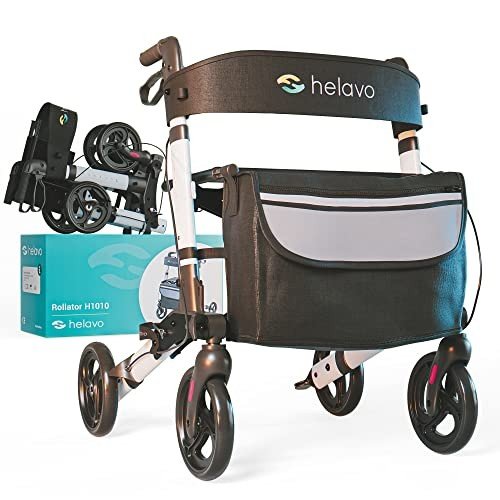5 Killer Quora Answers On Indoor Walker
페이지 정보
작성자 작성일25-06-08 16:54 조회13회 댓글0건관련링크
본문
The Rise of Indoor Walkers: A Comprehensive Guide
Indoor walkers have actually emerged as a popular option for people seeking to maintain an active lifestyle within the boundaries of their homes. These versatile makers accommodate a varied audience, from physical fitness enthusiasts to those recuperating from injuries. This short article will look into the principles of indoor walkers, their benefits, types, and some considerations to bear in mind before acquiring one.

What is an Indoor Walker?
An indoor walker is a physical fitness machine designed to imitate walking without the need for outdoor area. Unlike standard treadmills, which mainly concentrate on running and jogging, indoor walkers stress a natural walking motion. They are equipped with features that promote stability, assistance, and convenience, making them appropriate for a wide variety of users.
Why Choose an Indoor Walker?
Indoor walkers included a myriad of benefits that appeal to users of any ages and fitness levels. A few of the primary advantages consist of:
- Convenience: They can be utilized anytime, regardless of weather condition conditions or time, making it easier to fit exercise into a busy schedule.
- Low Impact: Indoor walkers are developed to reduce stress on joints, making them an excellent choice for those with mobility problems or joint concerns.
- Space-Efficient: Many designs are compact and simple to shop, fitting into studio apartments or homes with restricted space.
- Variety of Workouts: With adjustable speeds and strength levels, users can tailor their exercises to their physical fitness objectives.
Types of Indoor Walkers
Indoor walkers been available in various designs, each accommodating various user requirements. Here are some of the most common types:
| Type | Description | Perfect For |
|---|---|---|
| Manual Walkers | Run by the user, moving the limbs in a walking movement. | Beginners seeking an easy, affordable alternative. |
| Motorized Walkers | Equipped with a motor to control speed and incline settings. | Those wanting a more versatile workout experience. |
| Under-desk Walkers | Compact devices that fit under desks, promoting walking while working. | People working from home aiming to remain active. |
| Recumbent Walkers | Permit users to stroll in a seated position, lowering tension on the body. | Older adults or those with mobility difficulties. |
Key Features to Consider
When selecting the best indoor walker, a number of features can affect the total exercise experience. Here are some essential considerations:
- Size and Portability: Ensure it fits your designated workout area and is easily movable if required.
- Weight Capacity: Check the maximum weight limitation to ensure safety throughout workouts.
- Adjustable Settings: Look for makers that use adjustable speed and slope settings to customize your workouts.
- User-Friendly Display: Choose an indoor walker with an easy-to-read display screen that tracks time, range, calories burned, and speed.
- Comfort Features: Consider padded manages, adjustable height, and a sturdy base for improved stability and convenience.
Health Benefits of Indoor Walking
Engaging in regular indoor walking can yield numerous health benefits:
- Enhanced Cardiovascular Health: Walking increases heart rate and enhances blood circulation, decreasing the threat of heart illness.
- Weight Management: Regular walking, integrated with a well balanced diet plan, aids in weight control and can add to weight reduction.
- Enhanced Mood: Physical activity releases endorphins, which can help in reducing feelings of anxiety and anxiety.
- Strengthened Muscles: Indoor walking enhances the leg muscles and enhances total body coordination and balance.
Establishing a Walking Routine
To make the most of the benefits of indoor walking, it's vital to establish a constant regimen. Here are some ideas to get begun:
- Create a Schedule: Dedicate particular times throughout the week for walking. Aim for at least 150 minutes of moderate aerobic activity weekly.
- Heat up and Cool Down: Always begin with a 5-minute warm-up to prepare your body and finish with a cool-down to help healing.
- Listen to Your Body: Pay attention to how you're feeling. If you experience pain or pain, stop and assess your body's needs.
Regularly Asked Questions (FAQs)
Q: How much space do I need for an indoor walker?A: Most indoor walkers are compact and need a little footprint. It's advisable to have at least 6 to 8 square feet readily available for a safe workout location. Q: Can indoor walkers be utilized by olderadults?A: Yes, indoor walkers are excellent for older adults as they offer low-impact workout while promoting stability and mobility. Q: Do I need a fitness center membership if I have an indoor walker?A: No, having an indoor walker permits you to participate in cardio exercises in your home, negating the need for a health club subscription for walking workouts. Q: How do I maintain my indoor walker?A: Regularly check for loose screws, clean the device after use, and follow the maker's standards for specific upkeep schedules. Q: Are indoor walkers ideal for rehabilitation?A: Yes, many indoor walkers are developed to support rehab, particularly for patients recovering from surgery or injury. Always seek advice from with a healthcare expert before beginning a new exercise program. Indoor walkers offer a convenient and effective way to incorporate exercise into every day life. With their multiple health benefits, user-friendly designs, and adaptability, they are an outstanding financial investment for anyone looking to improve their
fitness levels in the convenience of their home. By understanding the different types of indoor walkers, essential functions to consider, and the health advantages of walking, individuals can make educated choices that align with their fitness goals. With commitment and the right equipment, staying active has never been much easier.





